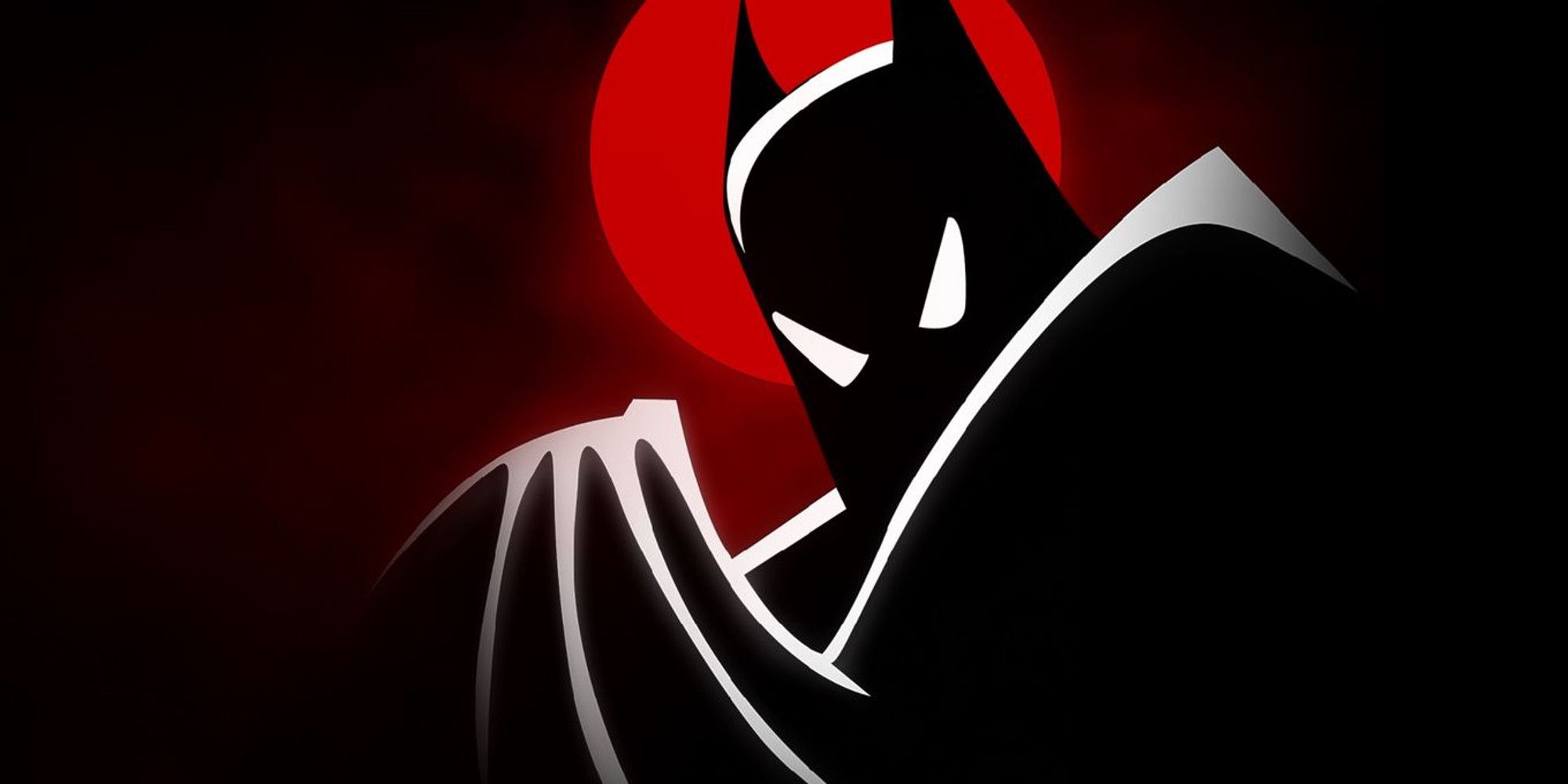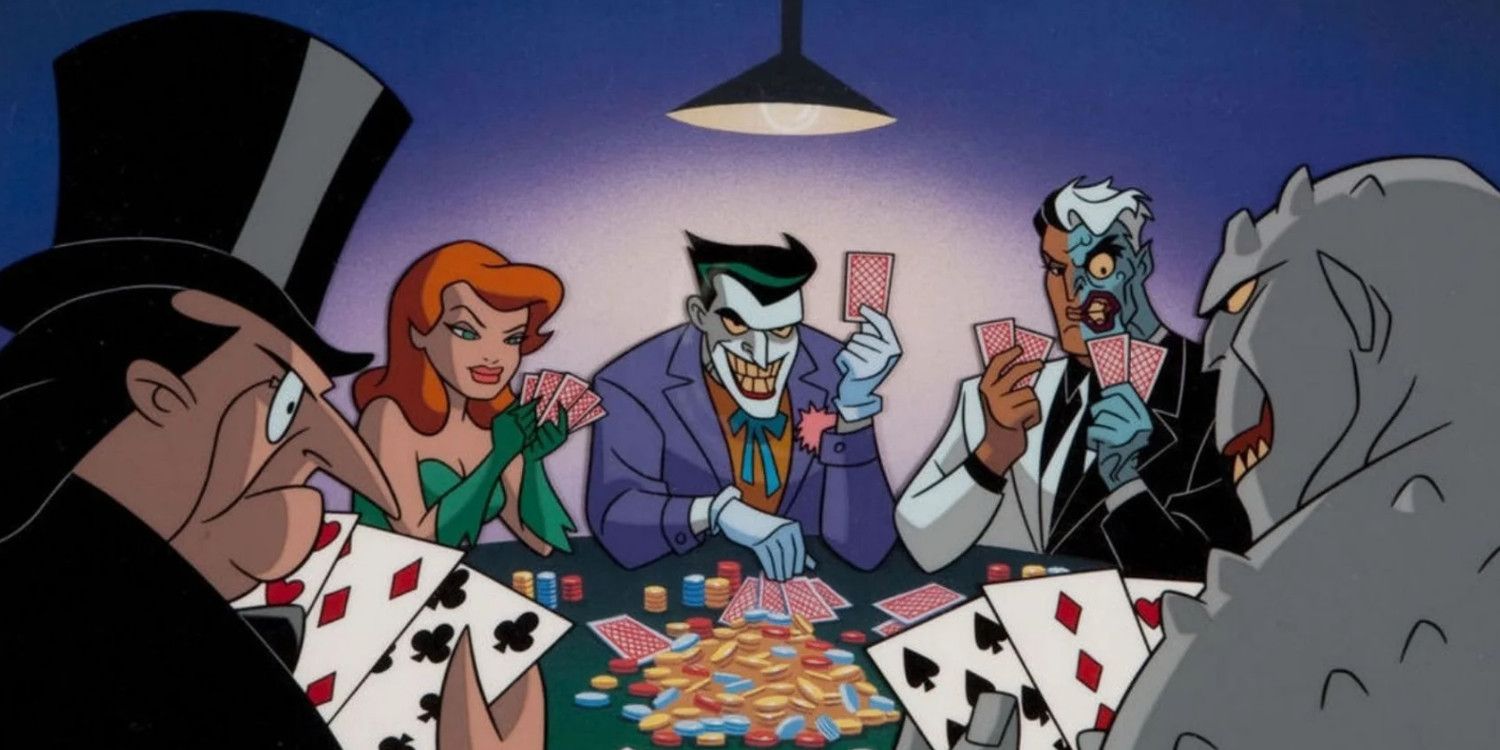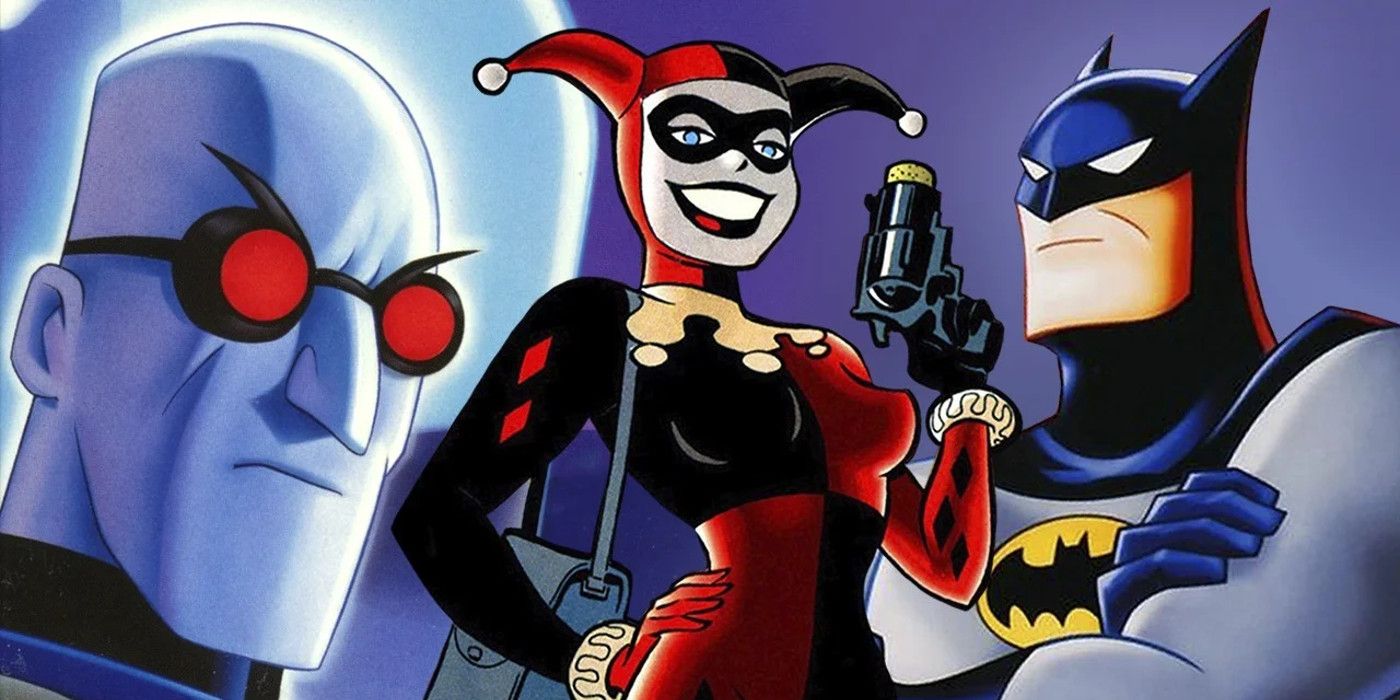
It has been almost three decades since the premiere of Batman: The Animated Series, and despite many versions of the Dark Knight being presented in comics, animation, and live-action in that time, it remains the definitive take on Batman. This is due to the show's creative team, which included many legendary comic book creators, distilling the essence of the Batman characters, visually and vocally, honoring the past even as they built upon what had come before to craft something wholly unique and innovative.
When Batman: The Animated Series first aired as part of Fox Kids' Saturday morning line-up, there was little indication of what it would become. While the show mimicked certain elements from the Tim Burton Batman films of the time (particularly with regards to the takes on Catwoman and Penguin), it was largely its own beast and drew upon the rich history of Batman in multiple media. This resulted in an oddly timeless yet anachronistic take on Gotham City, where the police patrolled the skies in zeppelins, men still wore hats and all the television screens were in black-and-white while existing alongside portable phones and high-tech computers.
The influence Batman: The Animated Series had on the mythology of Batman cannot be overstated. Stories taken from the series and revamps of the characters found their way into the movies and the comics even before the series came to a close. The show also set a gold standard for Warner Bros. animated adaptations of DC Comics' characters, with Batman: The Animated Series inspiring a shared universe with the equally acclaimed Superman and Justice League animated series, as well as Static Shock and Batman Beyond.

One thing that set Batman: The Animated Series apart from other superhero cartoons was that it employed many of the same creators who had worked on the Batman comics. This lent the series a certain sense of prestige that other animated series lacked. It also ensured a higher quality of writing, as the scripts directly adapting stories from the comics were often written by the comics' original writers. The show's writing team included legendary figures like Martin Pasko, Gerry Conway, Mike W. Barr, Elliot S! Maggin and Marv Wolfman, who is best known today as the chief writer behind Crisis on Infinite Earths but also was the co-creator of the third Robin, Tim Drake.
Perhaps the greatest example of this was the two-part story" The Demon's Quest," which formally introduced the character of Ra's Al Ghul into the world of Batman: The Animated Series. Ra's was unusual among Batman's villains, being an eco-terrorist who operated on a global scale and possessed a rigid code of honor. The first part was written by Dennis "Denny" O'Neil; a legendary writer and editor on Batman, who had co-created the character of Ra's Al Ghul and done much to restore a dark sense of mystery to the Batman comics of the 1970s. The second half was written by Len Wein, who also wrote the episodes "Moon of the Wolf," "Blind as a Bat", and "Off-Balance." While perhaps more famous among comic fans for co-creating the characters of Swamp Thing and Wolverine, Wein also had a lengthy run on the Batman comic book and co-created the character of Lucius Fox.
Artists also had a major role in shaping Batman: The Animated Series. Most of the show's aesthetic was the work of producer Bruce Timm, who had gotten his start as an animator with Filmation while drawing some of the mini-comics that came packaged with the original line of He-Man and the Masters of the Universe action figures. Timm was also responsible for most of the series' character designs. The exceptions to this were the designs for Man-Bat and The Mad Hatter (which were the work of Kevin Nowlan) and the designs for Mr. Freeze and The Riddler, which were drafted by Hellboy creator Mike Mignola.

Another element that has added to the longevity of Batman: The Animated Series is its art style. The character designs were simple and streamlined, yet strongly defined. This allowed a variety of range to the characters' faces; even the ones whose features were largely obscured by masks. The show also boasted amazing backgrounds, which were painted onto black paper using light colors in defiance of the usual animation industry standard. All this added to the neo-noir aesthetic of the series, presenting a vision of Gotham City and its denizens that was instantly familiar yet uniquely distinct visually.
Beyond the remarkable character designs, Batman: The Animated Series also had one of the finest ensembles in animation history. Voice director Adriana Romano defied convention in her casting of the show, reading 250-300 actors for each of the show's core roles and not giving any special consideration to celebrity status or whether or not the actor was primarily considered to be a voice actor. This resulted in some seemingly odd casting choices, such as Mark Hamill, best known at the time for playing Luke Skywalker, being cast as Joker.
Unusual as Romano's methods were, the results cannot be argued with. Today, Romano is considered one of the best voice directors in Hollywood and Hamill's take on Joker is considered by many Bat-fans to be the definitive voice of the Clown Prince of Crime. The same is true of actor Kevin Conroy, who has gone on to voice Bruce Wayne and Batman in numerous productions, even playing the character in live-action on Batwoman.

One more factor that made Batman: The Animated Series stand apart was how it simultaneously stayed true to its roots yet wasn't afraid to try new things and build upon the foundation established by the comics, the films, and the television series. There was a line from Rudyard Kipling which Denny O'Neil often quoted in regards to Batman as a character and his belief that Batman was flexible enough as a concept to allow for different interpretations; "There are nine and sixty ways of constructing tribal lays. And every single one of them is right!" In other words, it was possible for Batman to be the dashing swashbuckler, the stoic detective, the grim nightmare and even the doting father on those rare occasions he let his mask drop with Robin, depending on the needs of the story. Batman: The Animated Series showed a similar variety in the kinds of stories it told and the characters it created.
Perhaps no character exemplified this unique balancing act better than Harley Quinn. Originally the character was created as a tribute to the many thematic molls seen over the course of the 1966 Batman series, where every supervillain had a girlfriend who lounged around their hideout and squealed over all the jewels the bad guys just stole. The character proved popular enough, however, that writer Paul Dini kept writing her into his Joker stories, before eventually having her break off to join forces with Poison Ivy. Since that time, not only has Harley Quinn been introduced into the comics and become a key part of the Batman mythology; she's become one of DC Comics' most popular characters, meriting her own solo comic book and animated series.
Batman: The Animated Series also refined many elements of the comics, enhancing them in ways that came to be adopted as canon. The character of Mr. Freeze is probably the best example of this. In the comics, Freeze was a sinister scientist who turned to crime after an accident left him unable to live outside of a sub-zero environment. Paul Dini gave Freeze a tragic new origin, with his accident coming about because of a cruel employer and Freeze seeking revenge for the cryogenically frozen wife he had been laboring to save. This backstory was adopted for the Batman and Robin movie and, later, became a part of Mr. Freeze's origins in the Batman comics. Such is the legacy that Batman: The Animated Series inspired and why it is still regarded as the best version of Batman in history.
from ScreenRant - Feed https://ift.tt/2DCsKN6


0 Comments